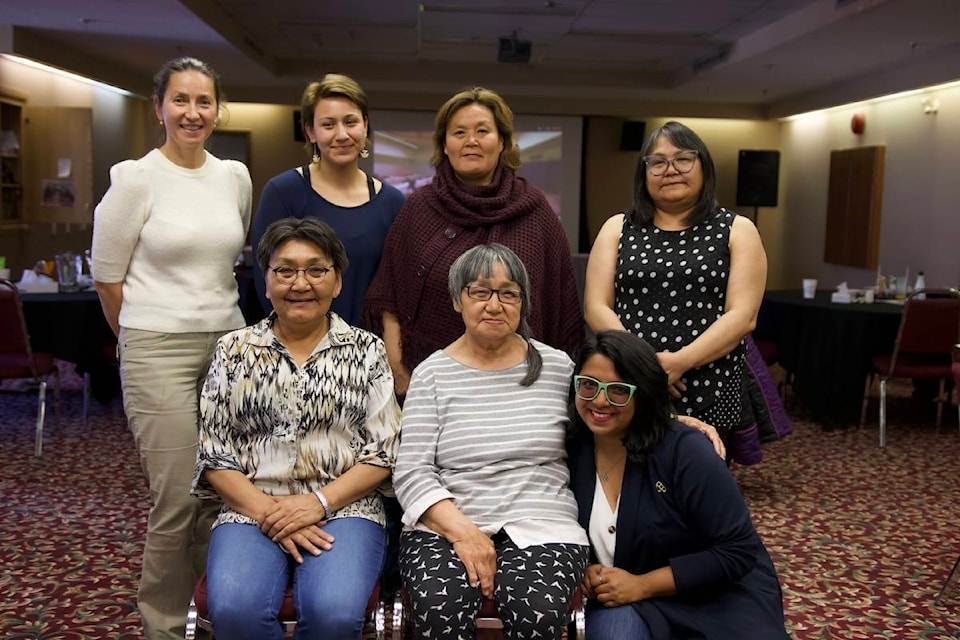Women from across Nunavut, who want to build a better future for themselves and the territory, are hailing the Arnait Tulliningit Inuit women’s leadership forum as a success.
The name Arnait Tulliningit refers to a women’s trail in a traditional camp, which mirrors the journey of women attending the forum.
“It was very exciting to have Inuit get together to try and plan a better future,” said Taloyoak invitee Elizabeth Lyall.
Lyall was one of several dozen people who took part in the women’s forum Aug. 23 to 26.
She grew up in Rankin but now lives in Taloyoak where she is the Aboriginal Head Start coordinator, an Iliatisniq Council board member (as well as one of its founders), as well as being involved in a women’s group. Lyall said her hamlet encouraged her to attend the forum because she is involved with so many different local organizations.
“I try to be active in what matters to me, which is helping other people better themselves,” Lyall said.
The program was originally supposed to be hosted in Rankin Inlet but bad weather meant the course ended up being divided between the Kivalliq and Iqaluit.
Throughout the week the women, who were linked between Rankin and Iqaluit via Zoom, were led through a series of workshops meant to empower and support them.
Among the topics covered were how to enhance women’s leadership at a community level, how to build capacity for new programs and seeking resources to provide such programs.
The multi-departmental approach saw speakers from all walks of life give presentations including NTI president Aluki Kotierk, Pautktuutit Inuit Women of Canada president Rebecca Kudloo and Sileema Angoyuak, president of Quliit Nunavut Status of Women.
A group of Elders was also supposed to make presentations, however due to difficulties with communicating via screen, they could not.
Lyall said one of her main focuses is trying to build up women’s self-esteem.
“You have to feel good about yourself to help others,” she said. “I know we’re good at everything in our sewing and our art, so we want to encourage each other. We can do anything when we don’t feel alone.”
Kugluktuk’s Keisha Westwood echoed the sentiment that it can be hard for women to make positive changes in their communities because they are put down or ignored by men.
“I see young women and older women belittling themselves for men but I’ve also seen the same women pack up and go hunting all by themselves. I want to help them find their voice and empower them,”
Although Westwood is not sure what kind of program she wants to start she said being on the land has helped her with her own healing process. She added that being at the conference made her feel less alone in her mission.
“I personally suffer from anxiety and being able to hear that it’s not only me wanting to make a change in the mental health system that really stuck out to me,” she said.
Tamar Mukyunik from Arviat has run a taxi business for three years and is hoping to open a photo studio in her hometown in the near future. She also helped start up a women’s group in Arviat earlier this spring.
Taking part in the leadership forum made her realize how important it is to develop more programs to teach Inuit language and culture.
“We need to strengthen it, practice it, promote it, use it, speak it write it, keyboard it. Make it a priority.” she said.
She added that one of the biggest gaps in programming for Nunavummiut in need was for orphaned children.
“Everybody is into the rich and the famous and the well-educated and supporting all those people but I want to speak for the orphans. These ones are left all by themselves,” she said. “I want organizations to support them, to comfort and to feed them.”
